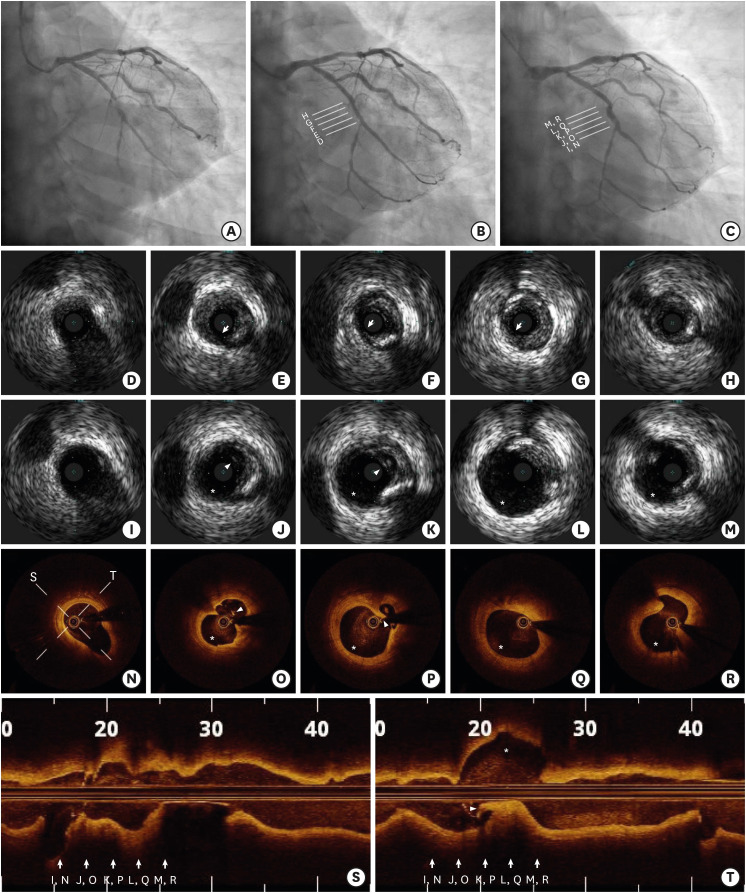Korean Circ J.
2021 Apr;51(4):376-378. 10.4070/kcj.2020.0516.
A Case of Aneurysm Occurring at the Dissection Site after Intervention with Drug-Coated Balloon
- Affiliations
-
- 1Department of Cardiology, Ulsan Medical Center, Ulsan, Korea
- 2Department of Cardiology, Dong-A University Hospital, Busan, Korea
- 3Department of Cardiology, Ulsan University Hospital, University of Ulsan College of Medicine, Ulsan, Korea
- 4Department of Cardiology, East Lancashire Hospitals NHS Trust, Blackburn, Lancashire, UK
- KMID: 2514643
- DOI: http://doi.org/10.4070/kcj.2020.0516
Figure
Reference
-
1. Bal ET, Thijs Plokker HW, van den Berg EM, et al. Predictability and prognosis of PTCA-induced coronary artery aneurysms. Cathet Cardiovasc Diagn. 1991; 22:85–88. PMID: 2009568.2. Vassanelli C, Turri M, Morando G, Menegatti G, Zardini P. Coronary arterial aneurysms after percutaneous transluminal coronary angioplasty--a not uncommon finding at elective follow-up angiography. Int J Cardiol. 1989; 22:151–156. PMID: 2521614.
- Full Text Links
- Actions
-
Cited
- CITED
-
- Close
- Share
- Similar articles
-
- No-Reflow Phenomenon During Treatment of Coronary In-Stent Restenosis With a Paclitaxel-Coated Balloon Catheter
- Impact of Dissection after Drug-Coated Balloon Treatment of De Novo Coronary Lesions: Angiographic and Clinical Outcomes
- Acute Type B Aortic Dissection in a Patient with Previous Endovascular Abdominal Aortic Aneurysm Repair
- A Case of Coarctation of the Aorta Treated with Balloon Angioplasty
- Treatment of Stent Dislodgement Complicated by Coronary Artery Dissection using Parallel Wire Technique and Small Balloon


